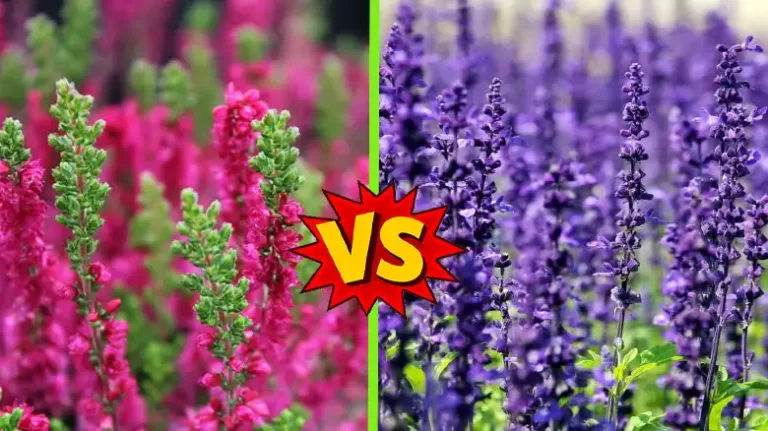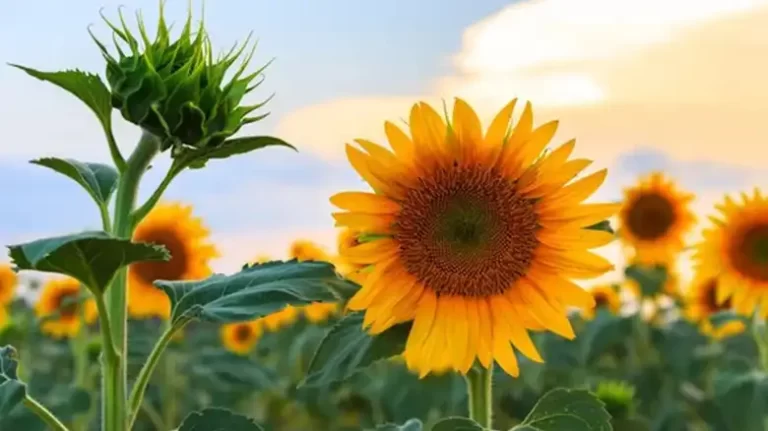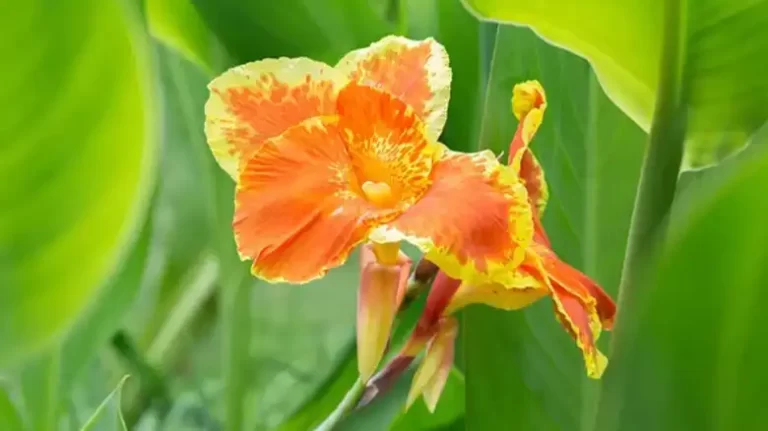What Are the Little Yellow Flowers in My Yard
When you gaze upon your yard, among the vibrant tapestry of flora, you may notice little yellow flowers dotting the landscape. These unassuming blossoms hold a unique charm and can be found in various corners of your garden.
But what are these small wonders, and what secrets do they hold? In this article, we embark on a journey to uncover the mysteries of these little yellow flowers and explore their significance in your outdoor haven.

Identifying Little Yellow Flowers
In the vast canvas of your yard, amidst the greens and other colorful blossoms, you might have noticed these tiny, bright yellow flowers gracing your garden.
While they may seem unassuming at first glance, these little yellow blooms carry a unique charm of their own. Let’s embark on a journey to uncover the secrets of identifying these small wonders.
Characteristics that Define Them
Size and Shape: Little yellow flowers, as the name suggests, are typically small in size. They often measure just a few inches in diameter and can have a variety of shapes – from simple daisy-like petals to intricate, multi-layered forms.
Petal Count and Arrangement: Most of these yellow flowers have numerous petals, forming a symmetrical pattern around a central core. This radial arrangement is a common feature that helps distinguish them.
Leaf Structure: Examining the leaves can also aid in identification. Some little yellow flowers have distinct leaf shapes and patterns that are unique to their species. Observing the foliage can provide valuable clues.
Common Varieties in Your Yard
Dandelions (Taraxacum officinale): These are perhaps the most recognizable little yellow flowers. Dandelions have bright yellow petals and form a circular head. Their leaves are deeply toothed, and their stems exude a milky sap when broken.
Buttercups (Ranunculus spp.): Buttercups are known for their glossy, buttery-yellow petals and their cup-shaped blossoms. They often appear as a cluster of bright flowers on slender stems.
Common Evening Primrose (Oenothera biennis): These yellow wonders open up in the evening, releasing a delicate fragrance. They have four-petaled flowers and lance-shaped leaves.
Creeping Jenny (Lysimachia nummularia): Creeping Jenny is a groundcover plant that features small, star-shaped yellow flowers. Its trailing stems and circular foliage give it a distinctive appearance.
Goldenrod (Solidago spp.): Goldenrods are known for their tall spikes of yellow flowers. They have elongated, lance-shaped leaves and provide a late-season burst of color in gardens.
Tickseed (Coreopsis spp.): These yellow flowers are often characterized by their daisy-like appearance with a central disk and radiating petals. They are commonly found in gardens and meadows.
Marigolds (Tagetes spp.): Marigolds come in various shades of yellow and are renowned for their aromatic foliage. They often feature double or single blooms, and their leaves are finely divided.
Sundrops (Oenothera fruticosa): Sundrops are perennial yellow flowers with four-petal blooms. They are known for their vibrant color and preference for full sun.
Benefits of Little Yellow Flowers
Little yellow flowers may appear unassuming, but they bring a wealth of benefits to your yard and garden.
These cheerful blooms not only brighten up your outdoor space but also play a significant role in enhancing its overall health and biodiversity. In this section, we’ll delve into the various advantages of having these tiny treasures in your garden.
1. Aesthetic Appeal
Enhancing Visual Delight: Little yellow flowers add a burst of vibrant color to your landscape, creating a visually pleasing contrast against the greens. Their cheerful and sunny appearance can instantly lift the mood of any outdoor area.
Versatile Landscaping: They serve as versatile design elements, allowing you to create stunning visual focal points, borders, or ground covers. Whether you want a formal garden or a wild, natural look, these flowers can adapt to your landscaping style.
2. Attracting Pollinators
Nature’s Pollinator Magnet: Little yellow flowers act as a natural magnet for essential pollinators, including bees, butterflies, and hoverflies. The nectar and pollen they offer provide sustenance for these creatures, promoting pollination in your garden.
Boosting Crop Yield: If you grow fruits and vegetables nearby, the increased pollinator activity can lead to higher crop yields. So, these flowers indirectly contribute to a more bountiful harvest in your garden.
3. Soil Health and Erosion Control
Improving Soil Structure: Some species of little yellow flowers, such as clover, have deep root systems that help break up compacted soil. This improves soil aeration and nutrient absorption, benefitting the overall health of your garden.
Erosion Prevention: Their root systems also play a role in preventing soil erosion. By anchoring the soil, these flowers help keep it in place, reducing the risk of runoff and soil loss during heavy rains.
4. Wildlife Habitat
Food Source for Wildlife: The seeds produced by certain yellow-flowering plants provide a valuable food source for small mammals and birds. These flowers contribute to the local ecosystem by supporting wildlife populations.
Shelter for Beneficial Insects: Beneficial insects, such as ladybugs and parasitic wasps, often seek refuge among the foliage of little yellow flowers. These insects can help control garden pests, promoting a healthier garden.
5. Low Maintenance
Easy to Grow: Many varieties of little yellow flowers are hardy and require minimal care. They can thrive in a range of soil conditions and are generally disease-resistant.
Drought Tolerance: Some species, like dandelions, have adapted to survive in dry conditions. This means they can maintain their beauty even during periods of water scarcity.
Caring for Little Yellow Flowers
Little yellow flowers, though often small and unassuming, can bring a burst of cheerfulness and natural beauty to your yard. To ensure these delightful blossoms thrive and continue to brighten up your outdoor space, it’s essential to provide them with the care they need. In this section, we’ll explore the key aspects of caring for your little yellow flowers, making sure they flourish and enhance your garden’s overall appeal.
Choosing the Right Location
Selecting the appropriate spot for your little yellow flowers is the first step in their care. Consider the following factors:
Sunlight: Most little yellow flowers prefer full sun, meaning they need at least six hours of direct sunlight daily. Ensure they are placed in an area that receives adequate sunlight.
Soil Quality: These flowers generally thrive in well-draining soil. Improve soil quality by adding organic matter if necessary. Perform a soil test to determine its pH and nutrient levels.
Watering Adequately
Proper watering is crucial for the health of your little yellow flowers. Here are some tips to keep in mind:
Consistency: Maintain a consistent watering schedule. While these flowers are often hardy, they still require regular moisture. Avoid letting the soil become too dry between waterings.
Deep Watering: When you water, aim for deep watering rather than shallow. This encourages the roots to grow deeper into the soil, making the plants more resilient.
Mulching for Moisture and Weed Control
Mulching serves multiple purposes in caring for your little yellow flowers:
Moisture Retention: A layer of mulch helps retain soil moisture, reducing the need for frequent watering. It also prevents the soil from drying out quickly.
Weed Control: Mulch acts as a natural barrier against weeds that might compete with your flowers for nutrients and moisture.
Fertilizing Appropriately
Fertilizing your little yellow flowers can promote healthy growth and vibrant blooms. Here’s what you need to know:
Choose the Right Fertilizer: Opt for a balanced, all-purpose fertilizer or one formulated for flowering plants. Follow the application instructions on the product label.
Timing: Apply fertilizer during the growing season, typically in the spring and early summer. Avoid over-fertilizing, as this can lead to excessive foliage growth at the expense of flowers.
Pruning and Deadheading
Pruning and deadheading are essential tasks for maintaining the appearance and vitality of your little yellow flowers:
Pruning: Regular pruning helps shape the plants and remove any dead or diseased growth. Use clean, sharp pruning shears for precise cuts.
Deadheading: Removing spent flowers, known as deadheading, encourages the plant to produce new blooms. This prolongs the flowering period and keeps your garden looking fresh.
Protecting from Pests and Diseases
Your little yellow flowers may occasionally face challenges from pests and diseases. Here’s how to protect them:
Pest Inspection: Regularly inspect your plants for signs of common pests like aphids or caterpillars. If you notice an infestation, take appropriate measures to control it.
Disease Prevention: Ensure good air circulation around your plants to reduce the risk of fungal diseases like powdery mildew. Avoid overhead watering, which can promote moisture-related issues.
Winter Care
As the colder months approach, it’s important to prepare your little yellow flowers for winter:
Mulch and Protection: Apply a layer of mulch around the base of the plants to insulate the roots. For particularly cold climates, consider using protective coverings to shield the plants from frost.
Pruning: Trim back any dead or damaged growth before winter sets in. This tidying up prevents disease and encourages healthy regrowth in the spring.
Related Questions
1. How often should I water my little yellow flowers?
Answer: The frequency of watering your little yellow flowers depends on various factors such as weather conditions and soil type. As a general guideline, aim to keep the soil consistently moist but not waterlogged.
2. Can I use any type of mulch for my little yellow flowers?
Answer: While you can use various types of mulch, organic mulches like shredded bark, compost, or straw are typically the best choices for little yellow flowers.
3. Should I deadhead my little yellow flowers throughout the entire growing season?
Answer: Deadheading, or removing spent flowers, is recommended throughout the growing season to encourage continuous blooming.
4. What is the best way to protect my little yellow flowers from pests?
Answer: Keeping an eye on your plants is the first line of defense against pests. Inspect them regularly for signs of aphids, caterpillars, or other common garden pests. If you notice an infestation, you can use insecticidal soap or neem oil to treat the affected areas.
5. How can I prepare my little yellow flowers for winter?
Answer: Preparing your little yellow flowers for winter involves a few key steps. First, trim back any dead or damaged growth to prevent disease. Apply a layer of mulch around the base of the plants to insulate the roots and protect them from extreme cold.
6. Are little yellow flowers suitable for container gardening?
Answer: Yes, many varieties of little yellow flowers can thrive in container gardens. Ensure that your containers have adequate drainage, use a well-draining potting mix, and select varieties that are suited for container growing.
7. Can I use general-purpose fertilizer for my little yellow flowers?
Answer: Yes, you can use a balanced, all-purpose fertilizer for your little yellow flowers. Look for a fertilizer with equal or near-equal ratios of nitrogen (N), phosphorus (P), and potassium (K).
Final Notes
In the realm of gardening and nature, these little yellow flowers are gems that often go unnoticed. They bring vibrancy, ecological significance, and beauty to your yard.
By understanding their characteristics, benefits, and care requirements, you can nurture these small wonders and create a thriving ecosystem within your outdoor sanctuary.
So, the next time you encounter these little yellow blooms in your yard, you’ll not only know their names but also appreciate their value in your garden’s intricate tapestry.



![Dolphin Flower Plant [Total Care Guide]](https://www.daisynatives.com/wp-content/uploads/2023/12/Dolphin-Flower-Plant-768x431.webp)

